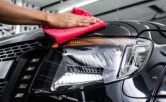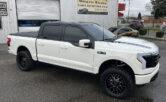
Window Tint Laws For Washington State Residents
Window film provides many benefits for vehicle owners. Besides enhancing vehicle appearance and providing increased privacy, modern window films are designed to protect occupants and the interior from Ultraviolet Rays, Infrared Radiation, and heat.
Because there are different degrees (darkness) of light reduction allowed for different windows and different types of vehicles, there are a few things you will want to know prior to booking an appointment to have your windows tinted.
“This blog will be covering the tint laws for Washington State residents. If you live outside WA State, check your local laws before having your vehicle tinted.”
Important Notice:
While these are the state window tint laws for WA State, many customers choose not to adhere to them. You should use your best judgment. We carry multiple shades of film ranging from 5% (limo dark) to 80% (almost clear)
We feel that it is our responsibility to ensure that you understand what is legal for your vehicle, then you can make a better-informed decision as to which film you want to be installed.
Net Law Confusion:
There is a lot of confusion about the VLT (Visible Light Transmittance) numbers listed as legal percentages. So here is a brief explanation to clear things up.
The first thing that you need to know is that nearly ALL windows have some factory shading in the glass already. Even if it doesn’t appear tinted, 99% of automotive glass has around 80%-70% VLT glare-reducing (tint) in the glass.
Knowing this; If you apply window film to the factory glass, the Combined-VLT (darkness) of that Window will be darker than the VLT of the Film you are applying. As an example; If you want to have a Window conform to the 24% VLT law, then the minimum VLT (darkness) Film you would want to be installed on that Window would be 30%.
The combined VLT measurement of the factory tinted glass and applied window film needs to be at-or-above 24%. Any applied window film darker than 30% will produce a combined VLT below 24%.
In short; Window film used to attain a given VLT needs to be lighter than the VLT % you are trying to achieve. Auto Visual Salon utilizes digital light metering equipment to measure combined VLT to ensure proper limits are achieved.
Window Tint VLT (darkness) in Washington State
Window Tint VLT (darkness) for Coupes and Sedans
- Windshield: Non-reflective window tint is allowed on the top 6”
- Front side windows: Must allow at least 24% light through.
- Rear side windows: Must allow at least 24% light through.
- Rear Window: Must allow at least 24% light through.
Window Tint VLT (darkness) for SUVs, Vans, Light duty trucks
- Windshield: Non-reflective window tint is allowed on the top 6”
- Front side windows: Must allow at least 24% light through.
- Rear side windows: Any VLT% film can be applied.
- Rear Window: Any VLT% film can be applied.
Window Tint Reflection in Washington State
Window tint reflection specifies how much of a “mirror-finish” or reflectivity a window film can have. High percentage reflective window films have a mirror-like appearance and can cause extreme glare for other drivers. It is also difficult to see into a vehicle with a reflective window film installed.
Window Tint Reflection for any on-road vehicle
- Any front, side, or rear windows: Maximum 35% reflectivity.
Other Washington State window tint rules
Additional rules and regulations pertaining to tinted windows are listed below.
- Medical Exemption: Vehicles operated by persons or carrying passengers with medical sensitivity to exposure of sunlight are permitted to tint all side & rear windows darker than 24% VLT. Also the top 6” of the windshield. Operators or passengers of the vehicle need written verification from a licensed physician for installation of the darker tint.
- Side Mirrors: Dual side mirrors are required if rear windows are tinted.
- Color Restrictions: Yellow, red or amber window tint is not allowed.
- Stickers: A sticker placed between the tint film and glass, that identifies a legal tint is required on the driver’s side front window.
- Certificate: Window film manufacturers need to certify the film they sell in Washington State.
We hope that this information helps you in your decision to protect & enhance your vehicle. Please contact us with any questions you may have about the films that we offer.




